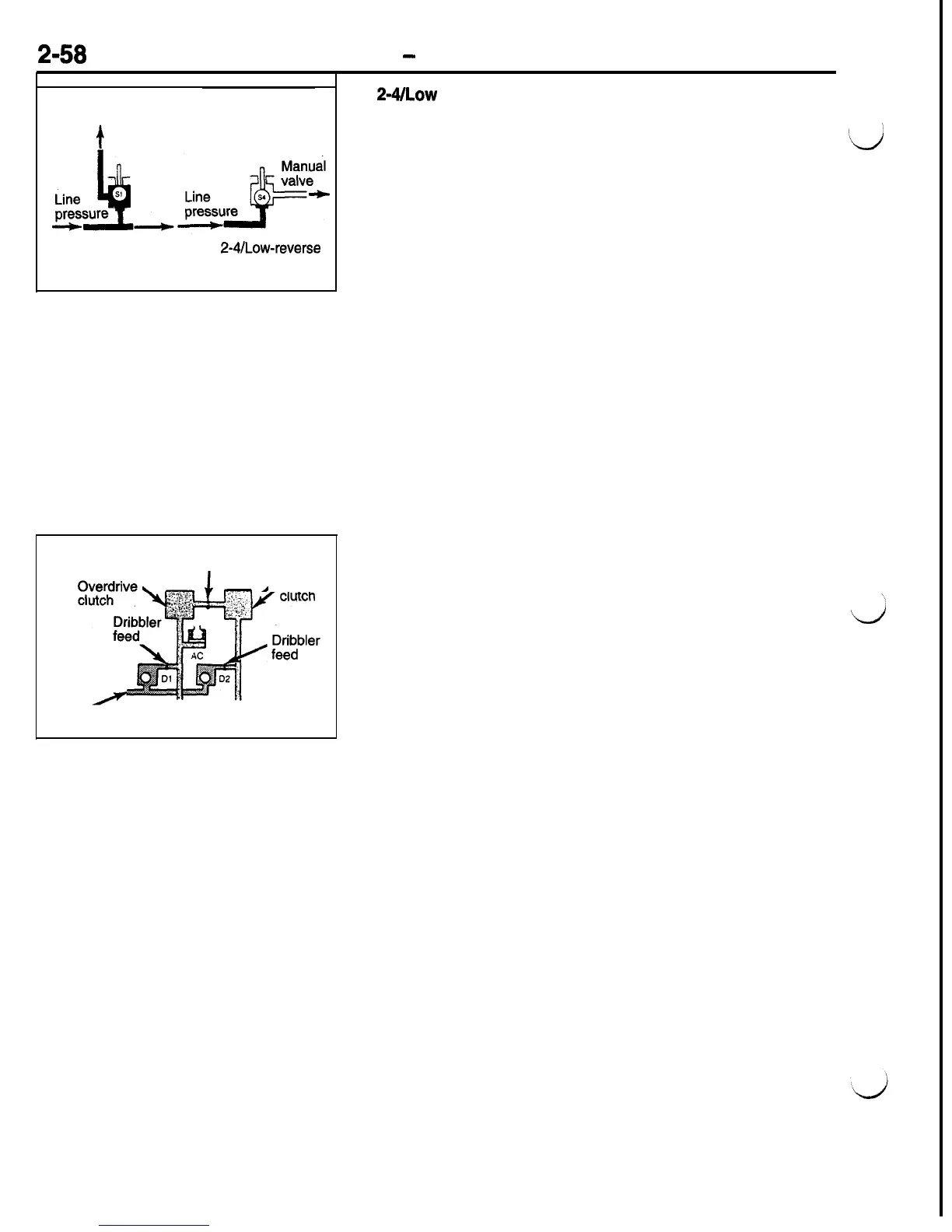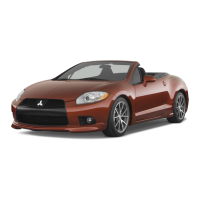2-58
POWER TRAIN
-
Automatic Transaxle
Underdrive
clutch
Underdrive
solenoide
(de-energized)
2-4/Law-reverse
solenoid
(energized)
Orifice located
in piston
Reverse
-
1
. .
Torque converter
apply pressure
~-~/LOW
Reverse and Underdrive Solenoids
When these two solenoids are not energized by the TCM,
their check balls prevent venting of a clutch. In this position
‘d
the check balls allow line pressure to reach the desired clutch.
These solenoids allow oil pressure to the clutch when de-ener-
gized and are referred to as normally applied valves. When
the solenoids are energized, the plunger forces the check ball
down and prevents line pressure from reaching the clutch.
At the same time, pressure is vented from the clutch.
Similar to the normally vented valves, these normally applied
valves are also cycled to modulate clutch pressure to any
value between line pressure and zero.
Dribbler Circuits
Two dribbler circuits feed low flow rate oil (residual pressure)
from the torque converter to the overdrive and reverse clutches
at all times. The low flow rate oil provided by the dribbler circuits
keeps both clutches full of oil. These clutches share a common
d
piston. If there is a difference in the amount of oil on either
side of the piston, the piston would tend to move toward the
clutch with less oil and cause that clutch to drag. If oil is only
on one side of the piston, and the retainer is spinning at high
speed, the spinning action will force oil to the outer diameter
of the retainer and cause the piston to move. The oil pressure
build-up caused by spinning is called centrifugal pressure.
Another feature added to avoid this situation is a small orifice
in the overdrive/reverse piston that helps equalize pressure
on both sides of the piston. The dribbler circuits only involve
low flow rates, which do not have any significant effect when
the clutches receive full line pressure.

